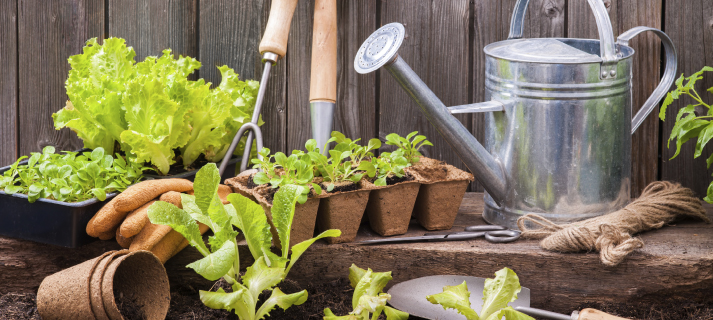It only takes one quick glance in the mirror for us to recognize the physical changes we are going through at this time of our lives. But beyond the image in the looking glass, I encourage us all to contemplate what is going on beneath the skin. The emerging aches and pains that many of us experience might be indications of inflammation and the degenerative joint and bone conditions known as osteoarthritis and osteoporosis.
I believe that a clear understanding of these conditions and their symptoms, triggers, and aggravators can help us to eliminate the risk factors that cause them. Through education, minor lifestyle changes, and a healthier diet, we can promote joint and bone health and achieve better overall vitality.
Understanding Inflammation
In the broadest sense, the aging process is triggered by a burden of free radicals that exceeds our bodies’ antioxidant potential. This initiates the genetic activation of the inflammatory response, which leads to symptoms of redness, swelling, heat, and pain, and eventually the loss of integrity and function. We can therefore define the aging process as a chronic and self-perpetuating inflammatory response, and understand that if we reduce inflammation through diet and lifestyle habits, we can slow the processes of aging.
Osteoarthritis
Osteoarthritis is the most common cause of adult arthritis. A degenerative process, it is commonly the product of certain health issues that many of us experience as we get older, such as:
- Wear and tear, injury, and repetitive motion
- Genetics
- Being overweight or obese
- Having diabetes, which increases our risk of developing joint problems
- Diminishing synovial fluid (a substance that protects our joints)
- A deficiency of the nutrients required to support and promote the integrity of connective tissue
Typical symptoms include stiffness and pain; redness, warmth, and swelling at the joint; and a loss of mobility, motility, and range of motion. And although the knees, hands, hips, and vertebrae are most often affected, osteoarthritis can affect any joint.
Osteoporosis
Osteoporosis, like osteoarthritis, is a degenerative process associated with aging. Although osteoporosis can affect any bone, it most commonly occurs at the hip, the vertebrae, the ribs, and the wrists, and most typically affects postmenopausal women. Osteoporosis is caused by a loss of bone density, which results in weak, brittle bones and a heightened risk of fracture. Multiple health issues can lead to a loss of bone density and osteoporosis. Here are 5 major risk factors:
- A poor diet. A strong, healthy bone density is maintained when the bones receive an adequate supply of specific amino acids and minerals. Bones begin to degenerate when these nutrients aren’t present in sufficient amounts.
- A lack of weight-bearing exercise. Bones need a certain amount of medium-impact exercise in order to stay healthy. Walking, jogging, and weight lifting all help.
- Certain medications. Consult with your doctor to find out if any of your medications are adversely affecting your bone density.
- Excess dietary protein and sodium intake, both of which have been linked to osteoporosis.
- A lack of sun exposure. Adequate sun exposure is essential to bone health for two major reasons. First, it allows the skin to produce vitamin D, which helps our bodies absorb calcium. Second, it allows a form of vitamin K2 to transport calcium into the bones.
The most obvious symptoms associated with osteoporosis are a loss of height, a stoop, or a fracture. However, because the process is silent and occurs over time, it is important for all boomers, regardless of gender or race, to be assessed on a regular basis.
Joint and Bone Restoration
Considering the fact that it is possible to age successfully and avoid these degenerative conditions, my suggestion is to be proactive.
For years I’ve been giving my clients specific dietary advice on how to prevent inflammation, osteoarthritis, and osteoporosis. I’ve created this master checklist for you so that you can start taking charge of your bone and joint health right now.
Remove the following from your diet:
- Refined grains (particularly wheat and wheat products)
- Refined sugars
- Fruit juice
- Chemically modified fats (like hydrogenated oils and trans fats)
- All additives (for example, preservatives, food coloring, and both natural and artificial flavors)
Pack your diet with veggies. Eat an abundant amount of leafy greens, cruciferous vegetables, and other nutrient-dense vegetables. Enjoy these any time of day as crudités, soups, salads, or vegetable smoothies/juices. Incorporate them into your meals by steaming, roasting, or baking them, according to your preference.
Colorize your plate. Rotate red, orange, yellow, green, blue, and purple fruits and vegetables into your diet to maximize your intake of a variety of nutrients. See if you can eat all the colors of the rainbow in a single day.
Add cold-pressed organic virgin olive oil and other healthy fats to all your meals and snacks.
Eat plenty of omega-3-rich fish and seafood, particularly wild-caught salmon.
Limit your red meat intake. And when you do eat red meat, choose only grass-fed/pastured bison, buffalo, lamb, and beef.
Eat whole eggs or egg whites for breakfast. Choose pastured organic eggs if possible.
Eat a vegetarian dinner twice a week. A combination of wild rice, organic legumes, and quinoa makes for a filling, hearty meal and a rich source of protein. Organic-legume-based pasta can also be the foundation of these meals.
Make your snacks count. Munch on crudités with a bean dip or guacamole, snack on small portions of organic legumes or corn chips, or enjoy small amounts of nutrient-dense nuts and seeds (like Brazil nuts, almonds, macadamias, pistachio nuts, pumpkin seeds, hemp seeds, chia seeds, and flax seeds).
Cook with healing herbs and spices. Many deliver a power punch of antioxidants and anti-inflammatory constituents that promote the healing process. In particular, turmeric/curcumin, cayenne, ginger, rosemary, garlic, and the herbs suggested in my most recent blog post should be incorporated into the menu.
Supplement appropriately to reduce inflammation and rebuild your connective tissue.
Try the green juice and bone broth recipes below. Add to your menu as snacks or part of the meal.
Green Juice Recipe
This powerhouse blend of fruits and vegetables boosts your antioxidant and nutrient intake to fight free radicals and inflammation. I suggest consuming it regularly for maximum benefit.
Ingredients
- Makes about six 8-oz glasses of juice
- 1 whole green apple or pear
- 2 whole English cucumbers
- 6–8 large stalks celery (or more to taste)
- 1 large bunch kale
- 1 large bunch spinach
- 1 large bunch romaine lettuce
- ½–1 peeled lemon
- Parsley to taste (be generous)
- Peeled ginger to taste (be generous)
Directions
Add all the above ingredients to your juicer, and let it work its magic. (We recommend the Fagor Slow Juicer if you don’t have one.) Drink and enjoy!
Bone Broth Recipe
Homemade bone broth is rich in gelatin, which promotes healthy joints, as well as essential minerals like calcium, magnesium, and phosphorous. And it isn’t as intimidating to make as it seems—this recipe requires only 5 minutes of prep time. Drink it on its own or use it as a base for soups and stews.
Ingredients
- 2 lbs of beef, lamb, turkey, or chicken bones
- 1 onion, peeled (rich in sulfur)
- 8–10 cloves of garlic, peeled (exhibits antiviral potential)
- 2 tablespoons apple cider vinegar (alkalinizes the body)
- 1 tsp Celtic salt
Directions
Place all ingredients in a slow cooker on high and cook for 1 hour. Reduce heat to low and cook for an additional 8–10 hours. Strain, cool, and store in glass jars.
One Last Word
As I sit and write out this information for you, I find myself chuckling and thinking about how wonderful it is to age with grace and dignity, in spite of the physical changes we may be experiencing at this time of our lives. When I ponder these changes, I first try to focus on the marvelous experiences that the years of my life have provided me, before I allow myself to think about the losses and the few aches and pains I have experienced in this period of transformation. Approaching life in this way encourages me to be proactive about my health, so that I can mature with the grace and dignity that I see and admire in some of my clients.
(Original post on BoomShop)



